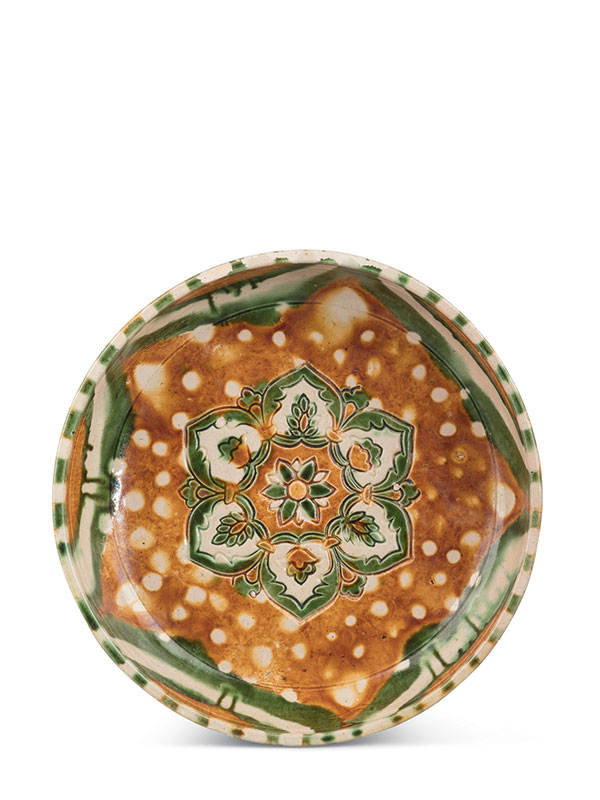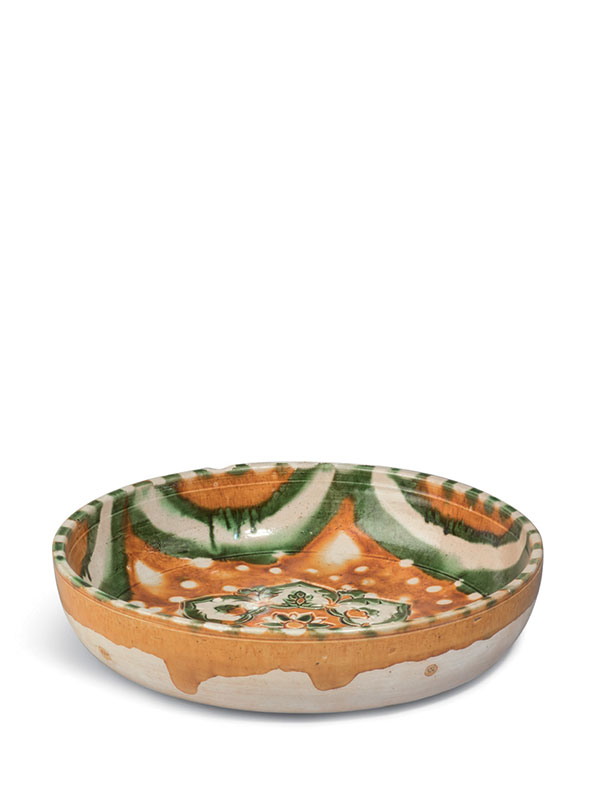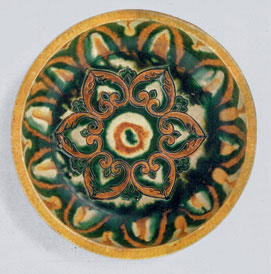Sancai impressed pottery basin
A large pottery round basin, the deep straight sides rising from a flat base. The centre of the interior is impressed with a rosette design, formed by six interlinked foliate motifs, which encircle a stylised lotus flower in the centre. The design is coloured in a carefully controlled sancai glaze of amber, green and white colours. Around the central motif is a wide band of cream dots on an amber ground, which has been applied using the wax-resist method. The sides of the interior are applied with a green, amber and straw-glazed chevron pattern. The flat rim has a design of evenly spaced rectangles in green and white. The exterior has a lustrous amber glaze, stopping unevenly above the base to reveal the pinkish buff ware body.
This splendid sancai basin demonstrates the great craftsmanship of Tang potters, combining in a single piece a variety of decorative techniques and colours to produce a particularly eye-catching result. Glazed with merging outlines, and motifs reserved in white in a contrasting glaze, it seems to be imitating in style and probably also in technique wax-resist textile design. Motifs such as the central rosette on this piece are now known to have been produced by impressing pottery stamps. According to Robert L. Thorp and Virginia Bower, “The rosette medallions on these vessels may be linked to those found on silver vessels once thought to be Sasanian, but now classified as Sogdian.”[1] Two sancai basins, both dated to the 8th century and similar in size and decoration, are in the Meiyintang collection (fig. 1).[2] A very similar sancai impressed basin is illustrated in Mayuyama. Seventy Years, vol. 1.[3]
Provenance: private collection, the Netherlands
- Thorp, L. R. and Bower, V. Spirit and Ritual, The Morse Collection of Ancient Chinese Art, The Metropolitna Museum of Art, New York, 1982, no. 52, pp. 82-3
- Krahl, R. Chinese Ceramics in the Meiyintang Collection, Volume Three (I) London, 2006, nos. 1278 and 1279, pp. 258-9
- Mayuyama. Seventy Years, vol. 1, Tokyo, 1976, pl. 284.



